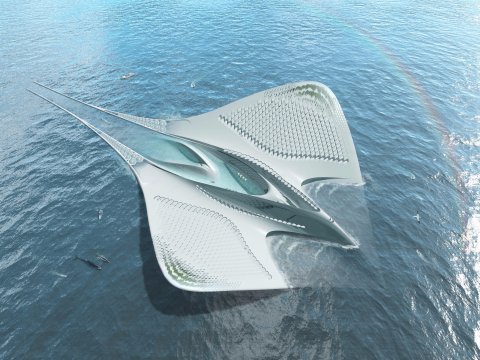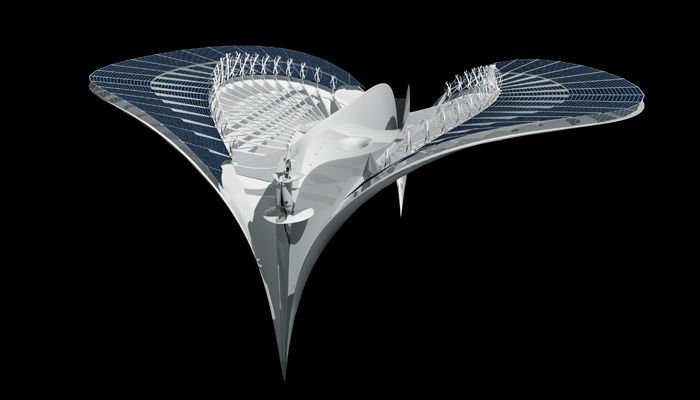Envisioned by French architect Jacques Rougerie, the giant floating City of Mériens is designed to give scientists a place to live while they conduct research on the surrounding ocean.

Measuring 900 meters long and 500 meters wide, the futuristic research facility will house up to 7,000 scientists and students from around the world. It will offer them a variety of classrooms, lecture halls, labs, living quarters, and dedicated areas for leisure activities and sports, to facilitate long-term research projects.
The facility was designed in the shape of a manta ray because of its ability to resist turbulence from storms and other harsh weather conditions. While to the eye the structure is just 60 meters tall, it plunges up to 120 meters below the surface of the ocean, which helps to keep the entire thing steady.
“Considering the dimension and size of the international scientific community – 7,000 people spread on the entire structure – I designed the City of Mériens in the form of a manta ray because it was the best design to accommodate such a community with regards to the best possible correlation between space and stability needs,” Rougerie said.

Its shape allows for a large lagoon to be hosted in the center of the facility, in which roving research vessels designed by Rougerie called SeaOrbiters can be parked. Space on either side of its access channel will be allocated for aquaculture breeding farms, where scientists can study various marine species. The tips of these vessel wings will house hydroponic greenhouses to produce fruits and vegetables for the residents.
SeaOrbiters will have 12 floors – six of which will be below sea level – and cost $50 million to create. The first one is expected to be operational by 2016.
“People would come from all over the world – it’s an international city governed by United Nations standards. It’s destined for researchers, academics, and students who wish to explore and study the ocean,” Rougerie said. “It would revolutionize the world of underwater studies due to the fact that people would have a permanent contact with the ocean, as well as a direct access to the underwater world, as part of the City is completely underwater.”
The entire facility is designed to be 100 percent sustainable and autonomous, running on renewable marine energy and producing zero waste.
While the City of Mériens is purely conceptual at the moment, Rougerie hopes for it to be constructed and functional by 2050.
Source: ScienceAlert
Advertisement
Learn more about Electronic Products Magazine





